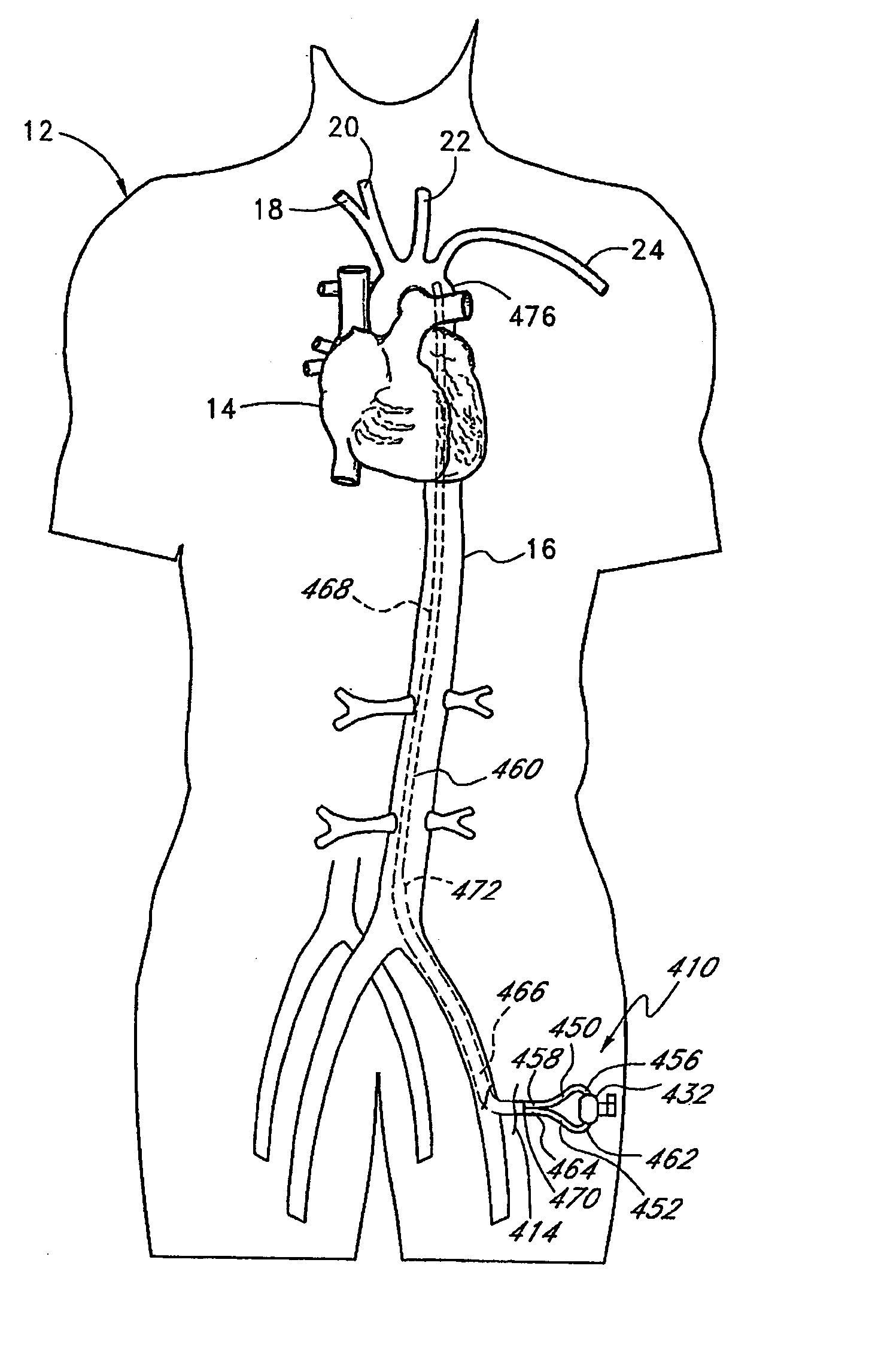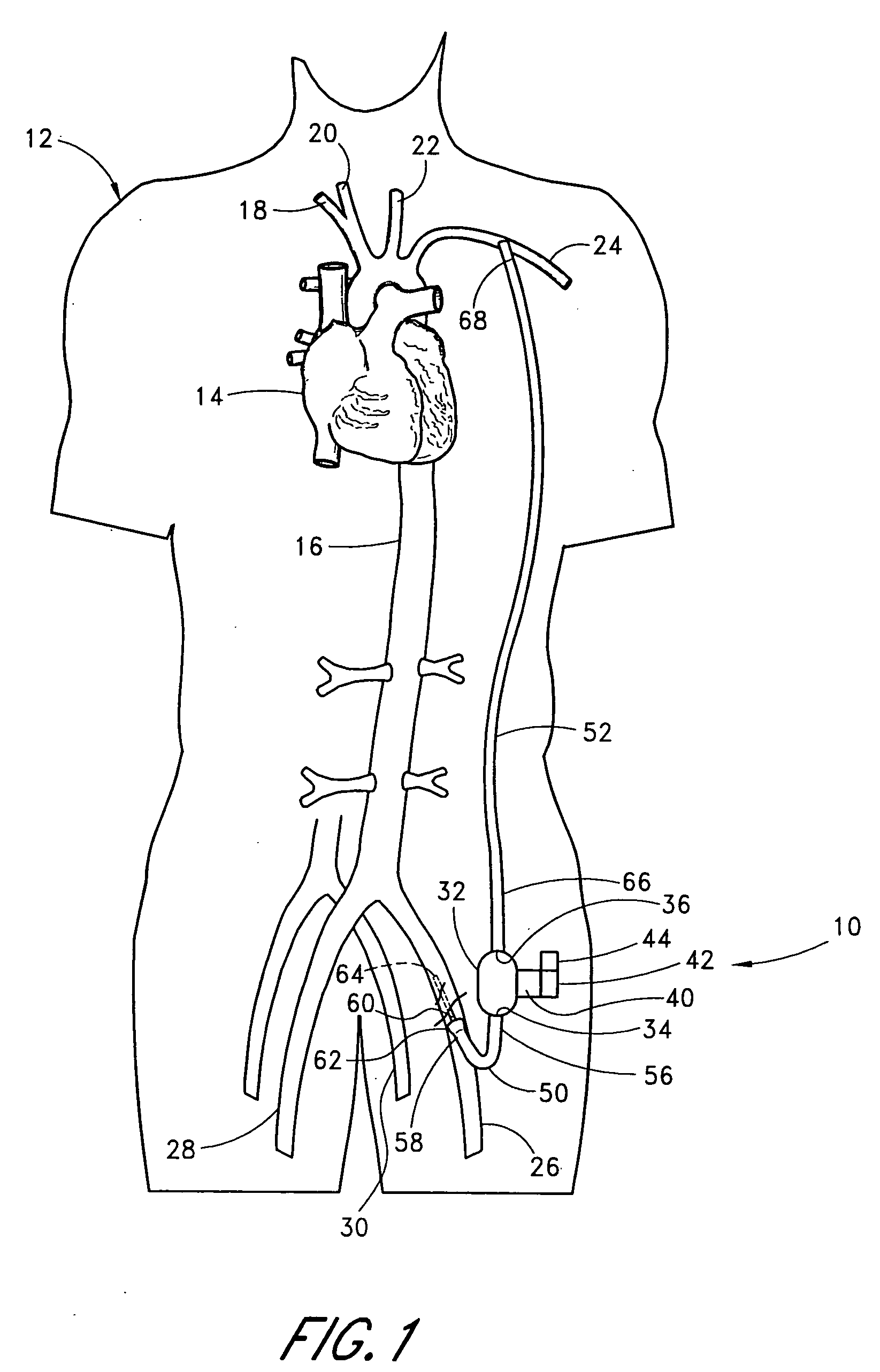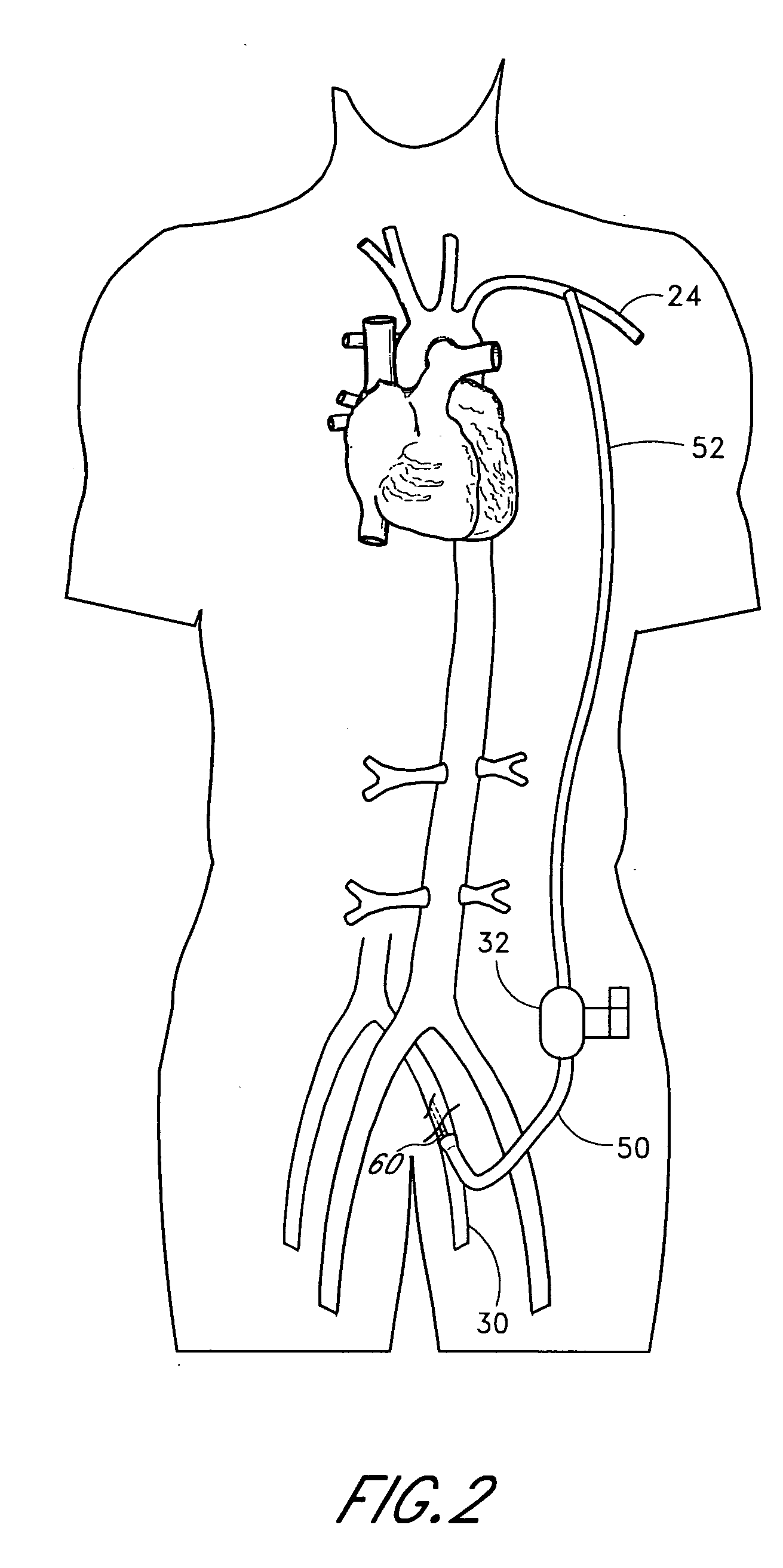Cannulae having a redirecting tip
a technology of cannulae and tip, which is applied in the field of cannulae, can solve the problems of life-threatening complications, degrading the vasculature of patients requiring organ failure treatment, and increasing the severity of occlusion, so as to reduce the likelihood of harmful interaction
- Summary
- Abstract
- Description
- Claims
- Application Information
AI Technical Summary
Benefits of technology
Problems solved by technology
Method used
Image
Examples
Embodiment Construction
[0057] Turning now to the drawings provided herein, more detailed descriptions of various embodiments of heart assist systems and cannulae for use therewith are provided below.
[0058] I. Extracardiac Heart Assist Systems and Methods
[0059] A variety of cannulae are described herein that can be used in connection with a variety of heart assist systems that supplement blood perfusion. Such systems preferably are extracardiac in nature. In other words, the systems supplement blood perfusion, without the need to interface directly with the heart and aorta. Thus, the systems can be applied without major invasive surgery. The systems also lessen the hemodynamic burden or workload on the heart by reducing afterload, impedence, and / or left ventricular end diastolic pressure and volume (preload). The systems also advantageously increase peripheral organ perfusion and provide improvement in neurohormonal status. As discussed more fully below, the systems can be applied using one or more cannu...
PUM
 Login to view more
Login to view more Abstract
Description
Claims
Application Information
 Login to view more
Login to view more - R&D Engineer
- R&D Manager
- IP Professional
- Industry Leading Data Capabilities
- Powerful AI technology
- Patent DNA Extraction
Browse by: Latest US Patents, China's latest patents, Technical Efficacy Thesaurus, Application Domain, Technology Topic.
© 2024 PatSnap. All rights reserved.Legal|Privacy policy|Modern Slavery Act Transparency Statement|Sitemap



